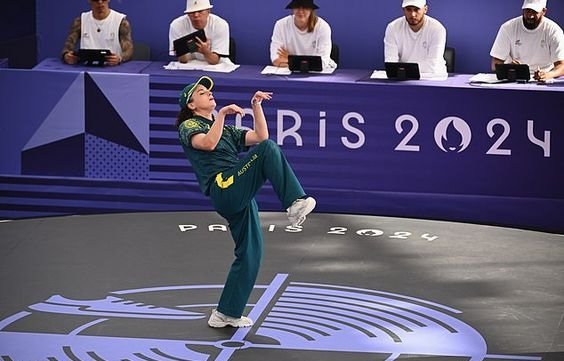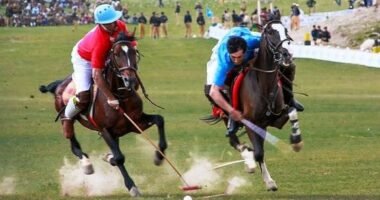The inclusion of Breaking as an Olympic Sport—extra widely referred to as breakdancing—into the Olympic Games is one of the most interesting developments in cutting-edge sports. Set to debut at the 2024 Paris Olympic Games, breaking’s adventure from the streets of New York to the grand Olympic level is a first-rate one, showcasing how a colorful cultural motion can evolve right into a valid recreation. This development represents no longer just a victory for the worldwide breaking community but also a turning factor for the Olympics, which continues to be trying to find ways to remain applicable in an ever-changing world.
The Origins of Breaking(Breaking as an Olympic Sport)
Breaking has its roots within the South Bronx, New York City, during the early Nineteen Seventies. It emerged as a part of the larger hip-hop lifestyle, which includes elements like DJing, MCing (rapping), and graffiti art. Originating amongst marginalized African American and Puerto Rican teens, Breaking as an Olympic Sport fast unfolds through neighborhood communities as a way of expression and competition. Dancers, known as b-boys (destroy boys) and b-girls (wreck women), would showcase their skills in cyphers—round formations in which individuals take turns acting difficult and regularly perform acrobatic dance movements to beats spun through DJs.
The Journey from Subculture to Mainstream
Breaking’s adventure to the Olympics is a mirrored image of its consistent upward push in recognition over a long time. Initially a grassroots movement, it developed globally as hip-hop way of life won mainstream recognition in the 1980s and 1990s. Breaking as an Olympic Sport competitions started out to draw interest in nations as far-flung as Japan, France, and South Korea, in which the dance gained a specifically strong following.
Major competitions together with the Battle of the Year in Germany, Red Bull BC One, and Freestyle Session started out to offer platforms for the sector’s pleasant b-boys and b-ladies to showcase their expertise. These activities contributed to breaking’s transformation into a worldwide phenomenon, attracting not just dancers however additionally sponsors, media coverage, and audiences from diverse backgrounds.
Despite its increase, breaking’s reputation as a legitimate game changed into no longer instant. Many still regarded it often as a cultural or artistic expression, instead of an area deserving of aggressive athletic reputation. However, breaking’s high degree of physical demand and the aggressive shape of its battles started to blur the lines between dance and recreation. As competitions have become extra prepared, with clean judging standards and expert training regimens, Breaking as an Olympic Sport slowly commenced to advantage recognition as a sport. The very last push got here while the World Dance Sport Federation (WDSF) started to foyer for breaking’s inclusion in international competitions.
Breaking and the Olympics: A New Era
Breaking as an Olympic Sport inclusion inside the Olympic program marks a considerable second in the courting between the Olympic Games and young people’s culture. The International Olympic Committee (IOC) has long sought methods to make the Games more attractive to more youthful generations, who can be more interested in present day, city sports activities than conventional Olympic disciplines.
Breaking as an Olympic Sport made its global aggressive debut within the 2018 Youth Olympic Games in Buenos Aires, in which it garnered sizeable attention. The achievement of that occasion convinced the IOC to consist of breaking in the 2024 Paris Olympics, part of an effort to make the Games more dynamic, inclusive, and reflective of modern international teens subculture.
For breaking, being part of the Olympics is a large validation of its popularity as a game. It brings improved visibility, legitimacy, and investment opportunities, which can assist propel the dance to new heights. It also offers b-boys and b-girls the danger to symbolize their international locations on the sector’s largest athletic level, a prospect that would have seemed unthinkable only some a long time ago.
The Structure of Olympic Breaking
In Paris, breaking competitions will take place in a head-to-head warfare format. Competitors, divided into guy’s and women’s categories, could be judged on several key standards: creativity, technique, musicality, range, performance, and interpretation of the track. These categories mirror the essence of breaking, in which the capability to innovate and reply to the track in real time is just as vital as studying physically disturbing movies.
Each war will consist of a couple of rounds, with dancers taking turns to perform their exercises while the judges rating them based totally on the aforementioned criteria. The judging might be performed by means of a panel of experts from the breaking community, making sure that the game’s roots and values are reputable.
Impact on the Breaking Community
The inclusion of breaking in the Olympics is expected to have a profound effect on the breaking community, each domestically and globally. For many dancers, the Olympics affords an opportunity to pursue their ardor as a professional profession. National teams are forming, with governments and sports companies beginning to provide monetary help for schooling that can help broaden a brand new generation of elite b-boys and b-girls.
However, there may be additionally a few situations within the breaking community approximately how Olympic involvement might alter the way of life. Some worry that breaking’s inclusion within the Olympics could cause over-commercialization or a dilution of the dance’s cultural and creative values. Breaking, in the end, has usually been approximately more than opposition—it is an expression of identification, community, and resistance.
The Future of Breaking as a Olympic Sport
Looking ahead, Breaking as an Olympic Sport debut ought to open the door to further growth and recognition. The sport is probably to emerge as more prepared, with expanded participation in neighborhood and global competitions. Major Breaking as an Olympic Sport activities will gain even greater visibility, and the dance may want to encourage a brand new technology of younger human beings around the arena to get concerned.
Conclusion
The journey of breaking from the streets of New York to the worldwide degree of the Olympics is a testimony to its strength as each an artwork form and a recreation. As breaking prepares for its Olympic debut in Paris 2024, it stands at a crossroads among its grassroots origins and its destiny as an expert recreation. The breaking community, with its deep admiration for culture and innovation, is poised to take on the challenges and possibilities that come with this new era.









